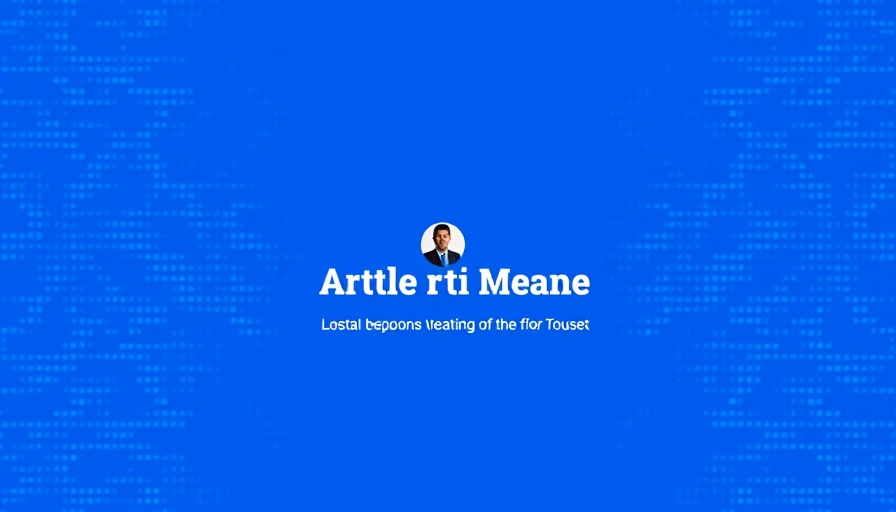
Lazy Loading: The Hidden SEO Risk
In a recent episode of Google’s Search Off the Record podcast, Martin Splitt illuminated a common misconception in web performance regarding lazy loading images. While this technique is typically employed to enhance page load times, it can have the opposite effect, particularly concerning the Largest Contentful Paint (LCP) metric.
Why LCP Matters
For those unfamiliar, LCP measures when the largest image or text block within the user's viewport loads. Given its significance in Google's Core Web Vitals, which directly influence SEO rankings, developers are understandably cautious. Lazy loading can disrupt the normal flow of resource loading, as emphasized by Splitt’s discussion of how delaying hero images can lead to a jarring user experience.
Examples of Lazy Loading Gone Wrong
Splitt provides a real-world example from the website developers.google.com, where every image defaults to lazy loading. This approach can pose a significant risk if the lazy-loaded images are the first elements viewed by users. When a browser is instructed to delay the loading of such crucial visuals, it can push the LCP back, which negatively impacts both user experience and SEO performance. This is especially true on slower networks or less powerful devices, where delays become more pronounced.
Understanding Browser Behavior
When an image is set with the loading="lazy" attribute, it deprioritizes its loading sequence. As a result, the browser completes layout and executes other tasks before fetching the critical hero image. This can lead to a frustrating delay in image display, making it essential for developers to consider how they implement lazy loading.
Challenges with Lazy-Loading Libraries
Another critical insight from Splitt concerns how certain lazy-loading libraries may hinder SEO. He warned that using outdated or custom libraries can obscure image URLs. If these libraries employ non-standard attributes to store image locations, Google may fail to index them properly. As Splitt noted, if the actual source isn’t present in standard HTML attributes, the images may go unnoticed by search engines.
Verifying Your Setup
To avoid these issues, developers can utilize Google Search Console’s URL Inspection Tool. This tool allows for a review of rendered HTML to ensure that above-the-fold images are correctly implemented. It’s crucial not to rely solely on visual inspections, as the rendered view holds the key for acknowledging how Google perceives your images.
Best Practices for Image Loading
With Google's native loading attribute now supported by most browsers, there's no longer a need for heavy JavaScript solutions for lazy loading. Switching to the HTML native attribute can significantly enhance both performance and indexing speed, ensuring that your website meets LCP expectations without compromising user experience.
Conclusion
The insights from Google’s podcast serve as an eye-opener regarding the delicate balance between optimizing for speed and maintaining SEO integrity. Developers must carefully design lazy loading strategies that prioritize visibility and succinctly convey essential content to users. By following these guidelines, web creators can ensure that they optimize their resources effectively and avoid penalties from Google’s algorithms. For more tips on improving your site’s performance and navigating SEO challenges, keep learning and stay ahead in the digital landscape.
 Add Row
Add Row  Add
Add 




Write A Comment